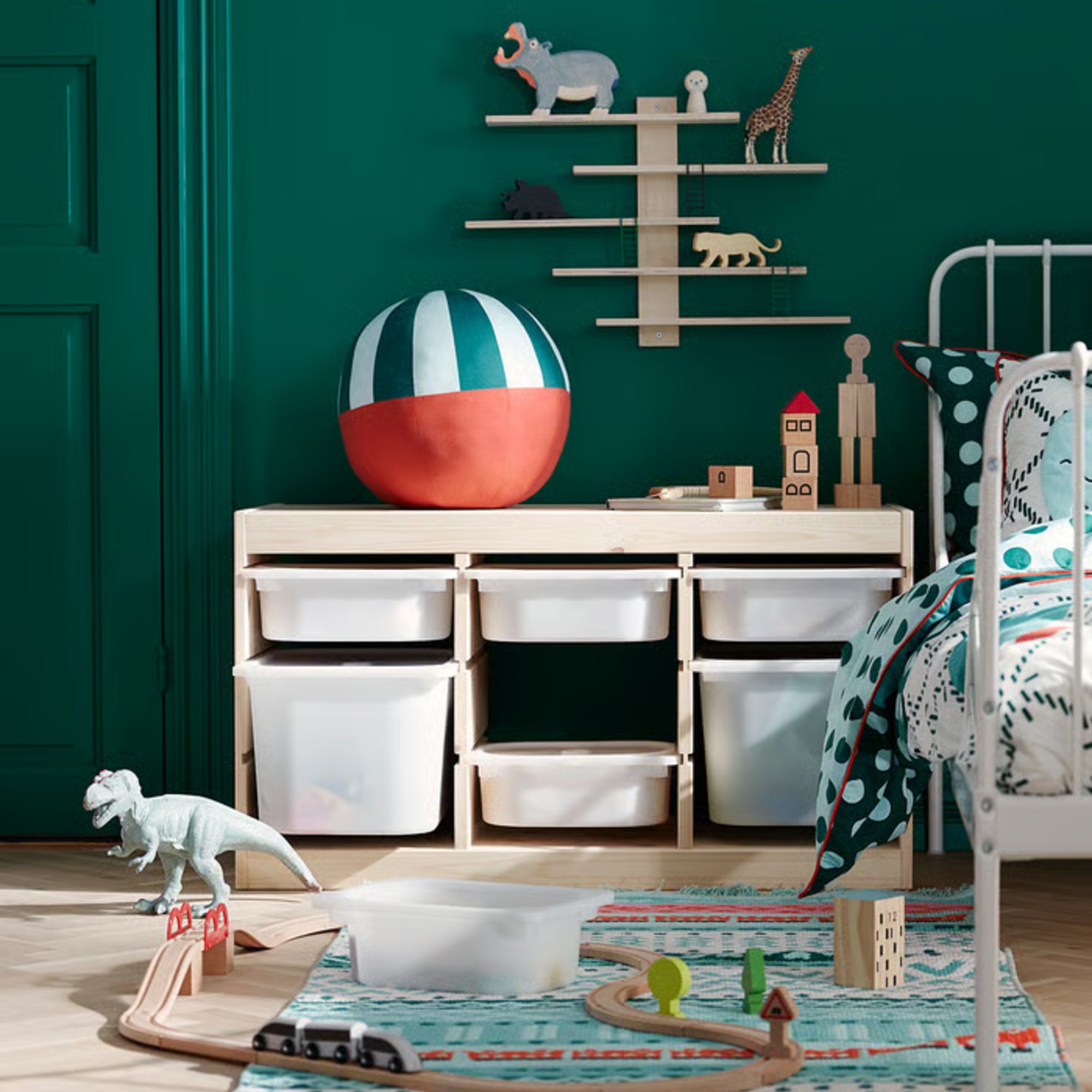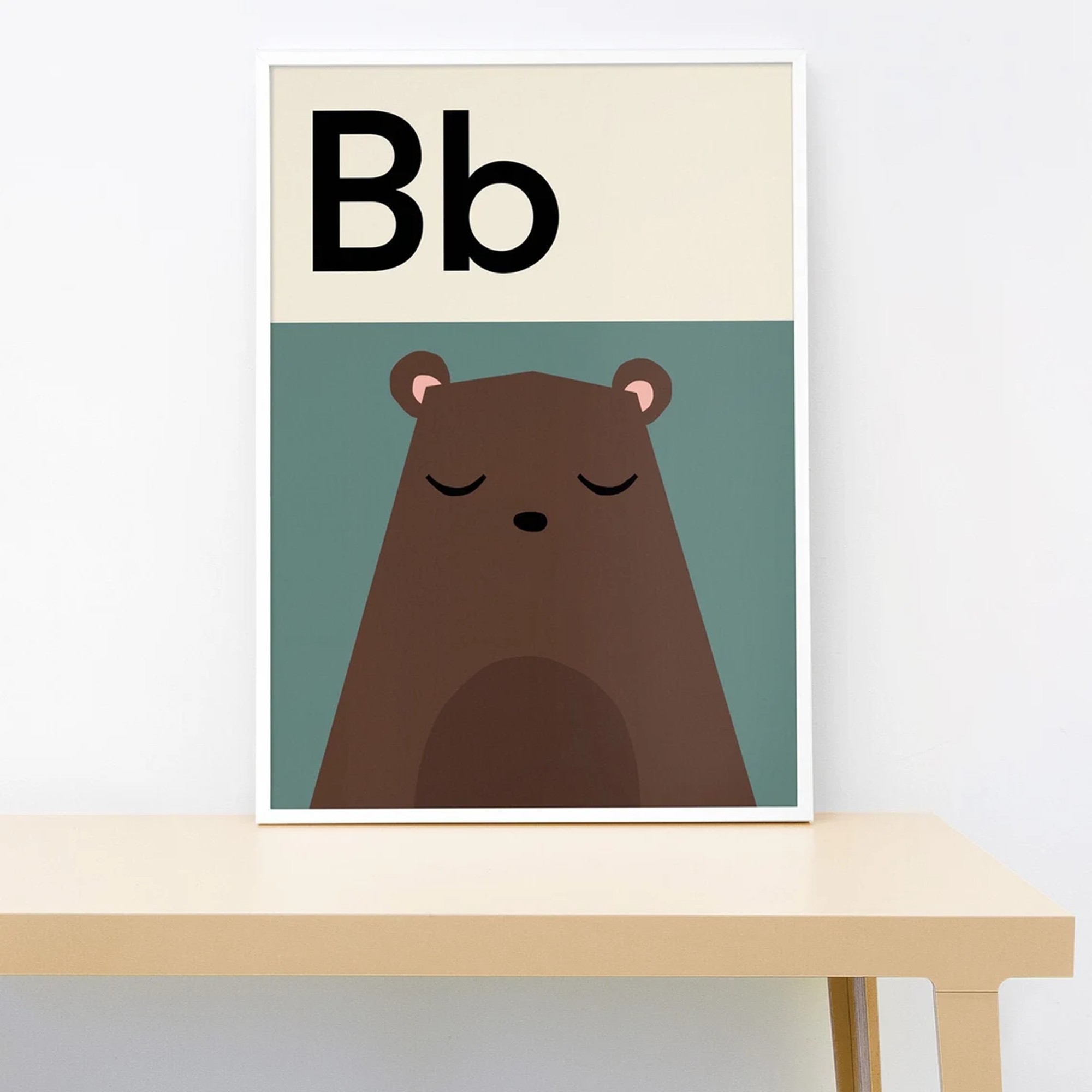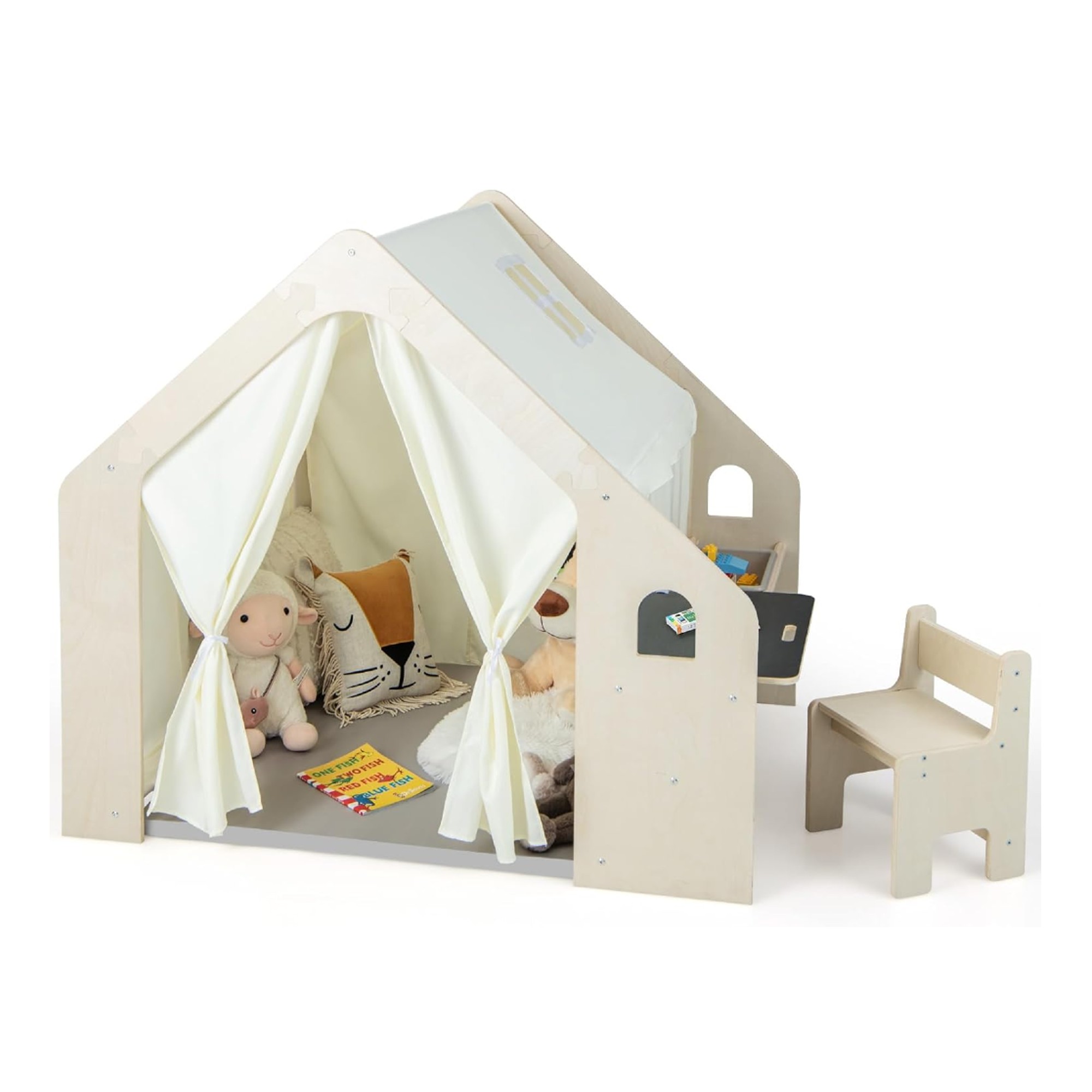IKEA playroom ideas – 10 ways to utilise budget-friendly flatpack furniture to maximise storage and fun in your little ones’ play area
From TROFAST to KALLAX, this is how to make the most of IKEA's versatile and clever designs in your kids' playroom

- 1. Personalise the TROFAST storage system
- 2. Build a desk using the TROFAST storage
- 3. Make storage fun with the LUSTIGT shelf
- 4. Build a bookcase den
- 5. Utilise KALLAX cubby holes for toy storage
- 6. Use the FLISAT shelves in a reading nook
- 7. Turn a KALLAX storage unit into a bench
- 8. Create a magnetic wall
- 9. DIY a doll house
- 10. Break up an IKEA playroom with unique decor
- How to mix up an IKEA playroom – our top picks

Who doesn’t love IKEA and its affordable, customisable flatpack furniture? We at Ideal Home sure do! And if there is one furniture category that the popular Swedish retailer particularly excels at, it would undoubtedly be children’s furniture – which is why there are so many great IKEA playroom ideas to utilise the clever designs.
If you’re after some versatile, modular playroom ideas that will grow with your little ones but also won’t break the bank, then look no further. And as it goes for most IKEA designs, the brand’s children’s room and playroom furniture pieces are just as easy to customise and put your and your kids’ own stamp on. That’s why there are so many creative IKEA hacks out there to try out.
‘IKEA is always the perfect blend of functionality and eye-pleasing modern Scandi design,’ says Aurélien Farjon, interior stylist of Style Makers. ‘These are well-tested products with children psychology in mind making them truly fit for purpose.’
Violeta Stoyanova, Fantastic Handyman's renovation specialist, adds, ‘When designing a children’s playroom, you want furniture that’s durable, easy to clean, flexible and safe. IKEA has several pieces that meet those standards while also being affordable and adaptable. Perhaps one of the most overlooked advantages is how easy IKEA pieces are to replace, upgrade or hack. If a bin gets cracked or you decide you need more storage, matching parts are readily available and often compatible across product lines. This reduces long-term maintenance and makes it easier to gradually transform the room as your child’s needs change.’
1. Personalise the TROFAST storage system

The IKEA TROFAST storage system is present in most modern-day playrooms as it is an easy and effective way to store children’s toys. But given the simplistic design of this playroom storage idea, there’s also plenty of room for personalisation.
‘What I really like about it is that it’s modular so you can stack it to make the most of the height of the room, make it as big or as little as you want, fit it into odd corners,’ says Laurie Davidson, interior stylist of Style Makers. ‘Also, it comes in pine wood so you can customise it. You can make it as colourful and bright for your kids as you want. You can label all the boxes so that everything's very clear for them. And you could get them to be a part of it as well. Use different colours for different things, use it as a learning curve to put things back where they belong.’
Violeta at Fantastic Handyman agrees, ‘Label each bin with pictures for younger kids and words for older ones to encourage tidying up. You can also mount a shallow TROFAST unit on the wall to store craft supplies or LEGO bricks sorted by colour.’
Sign up to our newsletter for style inspiration, real homes, project and garden advice and shopping know-how
2. Build a desk using the TROFAST storage

Sticking with the TROFAST system, there are also so many different things you can turn this toy storage idea into, beyond just storage and personalisation. You can extend it into a desk for your little one to do all their drawing and painting on, much like content creator Gina Gonzalez of @stylewithgigi on Instagram has done. Alternatively, it can be used as a seating bench.
‘TROFAST is hands down one of IKEA’s most versatile and kid-friendly storage solutions. The frame comes in various sizes and depths, and the bins slide in and out easily for toy rotation. Mount a low TROFAST frame along one wall to serve as a toy bench with easy-to-reach bins for toys, crafts and games,’ Violeta at Fantastic Handyman suggests.
3. Make storage fun with the LUSTIGT shelf

As much as we love IKEA hacks, sometimes the Swedish retailer comes out with a design where no hacks are needed. And the fun design of the LUSTIGT shelf that’s made for displaying your little ones’ toys or art supplies is the perfect example of this.
‘This is flexible wall storage that's interactive and functional, which is perfect for organising craft tools or adding a bit of visual fun. Mount LUSTIGT above the art or activity area to hold scissors, crayons, paint cups or even small containers of beads and stickers. It keeps everything off surfaces but it's still accessible,’ Violeta at Fantastic Handyman recommends.
4. Build a bookcase den

It’s not all about just the TROFAST storage system when it comes to IKEA playroom ideas – even though it is kind of the star of the show. Even classic designs like the BILLY bookcase can be utilised in a playroom, as long as it’s the lower version.
All this IKEA BILLY hack consists of are two of those low BILLY bookcases with a sheet over the top, with the top ideally raised in the centre, either by a hook on the wall or on the ceiling. And you’ve got yourself and your little ones a bookcase den.
5. Utilise KALLAX cubby holes for toy storage

Whenever we ask professional organisers and interior experts about toy storage tips, the IKEA KALLAX cubby hole units are always one of their top recommendations.
‘The KALLAX shelving unit is ideal for storing toys, books, and craft supplies with its versatile cubic design,’ confirms Alex Stubbs, Flitch interior stylist. ‘Place the KALLAX shelving unit against a wall to maximise floor space. Use the upper cubbies for books and decor, and the lower ones for baskets filled with toys, keeping the playroom tidy and visually appealing.’
By organising them this way, your kids will have easy access to their toys when they want to play with them and will also have no excuse not to put them away once they’re done playing. It’s a win-win.
Courtney Bavis, toy and organisation content creator of @playroominspoon Instagram, who’s designed an IKEA playroom for her own children, adds an extra tip, ‘Fill the cubes with a mix of baskets for toys and open spaces for books and display items. I love the RISATORP wire baskets for this since they are low and see-through. This allows kids to see exactly what is in each basket so the toys get played with more. I find the full cube bins can easily become a bottomless pit of toys that get dumped and not played with.’
6. Use the FLISAT shelves in a reading nook

A cosy reading nook is a must in a well-designed playroom, in our opinion. And every reading nook needs a set of easily accessible books, of course. While there are plenty of slim wall-mounted bookshelves for kids on the market, the £15 FLISAT shelves from IKEA are very inexpensive and versatile – and make for a lovely book display.
‘I’d place the FLISAT wall storage in the corner to create a cosy reading nook. Place the wall storage at child-height to create an inviting book display and to encourage reading,’ Courtney suggests.
Violeta at Fantastic Handyman adds, 'Forward-facing books are more inviting for young children. This also saves space compared to a traditional bookcase. Mount them at child height so the kids can pick their own books.'
7. Turn a KALLAX storage unit into a bench

Apart from storage, the IKEA KALLAX can also be turned into a bench which then becomes a multipurpose piece of furniture – an essential for small playroom ideas.
‘Turn a KALLAX unit on its side to create a reading bench with storage underneath. We have done this in our playroom,’ Courtney says.
8. Create a magnetic wall

When coming up with ideas for your children’s playroom walls, something stimulating as well as interactive should be at the top of the list. And creating a magnetic wall with the IKEA SVENSÅS magnetic memo boards is a perfect example of the latter.
‘Add these magnetic memo boards to your wall for an instant magnetic play area for your kids. Use as many as you want side-by-side to make it as large as you want! This hack is always very popular when I post about it,’ Courtney exclaims.
9. DIY a doll house

By now, you’ve probably gathered that the IKEA KALLAX is at the centre of many IKEA hacks, both for the playroom and the rest of the house. So you won’t be surprised when we present you with yet another, turning a KALLAX cube storage unit into a DIY dollhouse.
‘One idea is to transform a KALLAX unit into a dollhouse by adding decorative paper or fabric to the back of each cubby and using smaller boxes or bins within the cubbies as rooms or storage for doll accessories,’ Alex says.
10. Break up an IKEA playroom with unique decor

Lastly, it’s worth pointing out that as wonderful as IKEA playrooms are, it is recommended to incorporate other non-IKEA pieces in your playroom scheme to break it up a little and make it more personalised to you and your kids.
‘Mixing IKEA pieces with other products can add unique elements and personalisation to a playroom. Incorporating handmade toys, custom furniture, or vintage items can create an eclectic and individualised space. This approach allows for the inclusion of specialised items that IKEA might not offer, catering to specific interests and needs,’ Alex says.
Courtney agrees, ‘IKEA offers a great foundation for a playroom, but mixing in pieces from elsewhere can add personality and uniqueness. Blending in a few special items—like a fun rug (we love our rainbow rug!), unique wall art, or a play structure—can make the space feel more personalised and warm. The key is to strike a balance that suits your style and your child’s needs.’
How to mix up an IKEA playroom – our top picks
There are many different benefits to IKEA playroom ideas from affordability to versatility. Just make sure to make it your own with the use of a few clever and creative IKEA hacks along the way.

Sara Hesikova has been a Content Editor at Ideal Home since June 2024, starting at the title as a News Writer in July 2023. She is now also the Ideal Home Certified Expert in Training on Furniture, and so far has tested over 150 different sofas.
Graduating from London College of Fashion with a bachelor’s degree in fashion journalism in 2016, she got her start in niche fashion and lifestyle magazines like Glass and Alvar as a writer and editor before making the leap into interiors, working with the likes of 91 Magazine and copywriting for luxury bed linen brand Yves Delorme among others.





